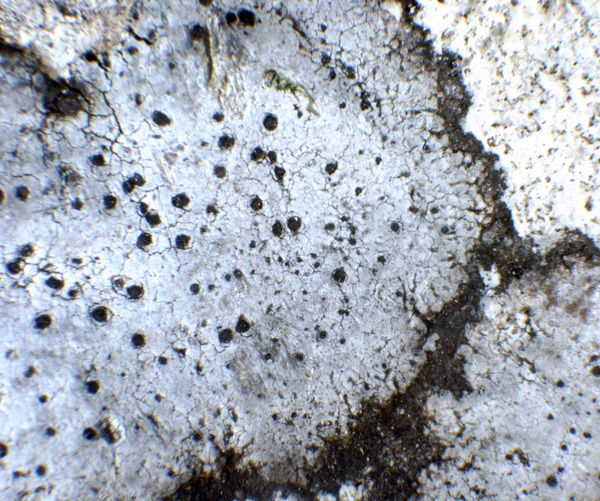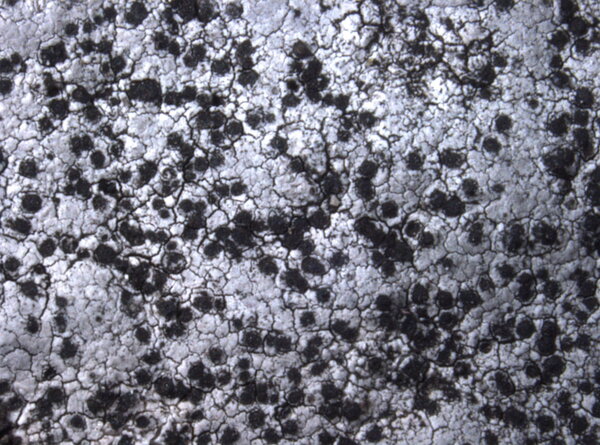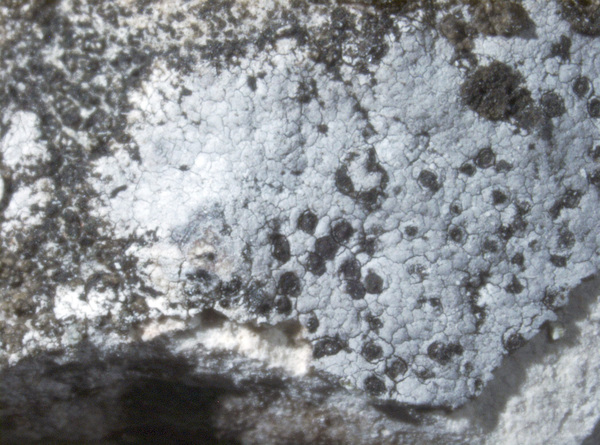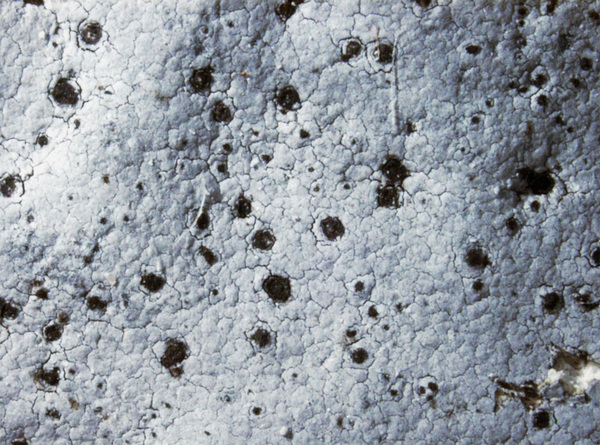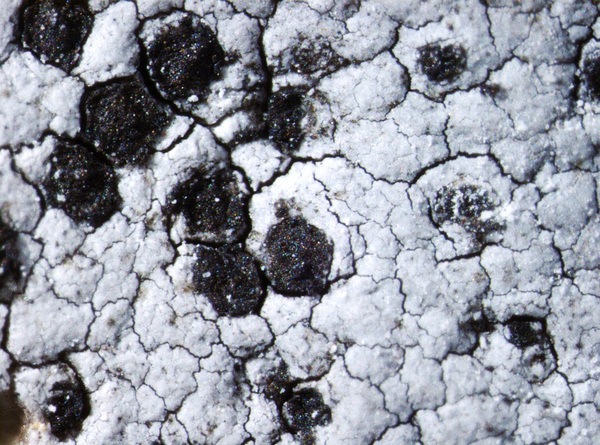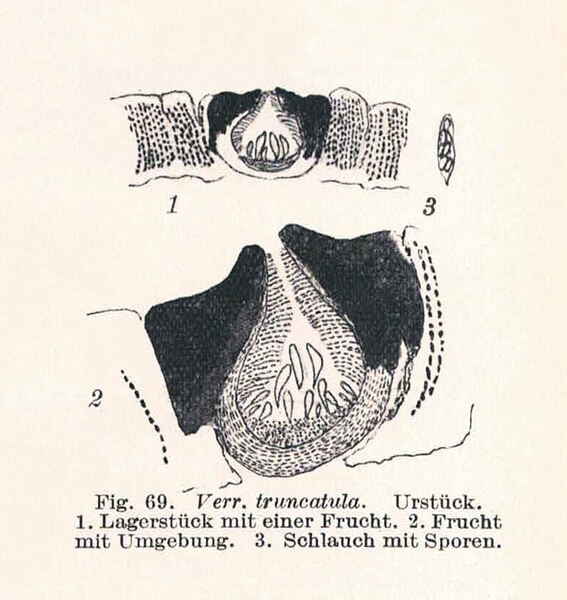Verrucaria caerulea DC.
in Lamarck & de Candolle, Fl. Franç., éd. 3, 2: 318, 1805.
Synonyms: Involucrothele bormiensis (Servít) Servít; Involucrothele plumbea (Ach.) Servít; Verrucaria amylacea f. compacta Arnold; Verrucaria bormiensis Servít; Verrucaria fusca f. benacensis Arnold; Verrucaria fusca f. caesia Anzi; Verrucaria glaucina Ach. non auct.; Verrucaria plumbea Ach.; Verrucaria truncatula Nyl.
Distribution: N - VG, Frl (Breuss 2008), Ven (Nascimbene & Caniglia 2003c), TAA (Nascimbene & al. 2006, 2022), Lomb, Piem (Isocrono & al. 2004), Emil (Fariselli & al. 2020), Lig (Valcuvia & al. 2000, Watson 2014). C - Tosc, Umb (Genovesi & Ravera 2001, Ravera & al. 2006), Abr (Nimis & Tretiach 1999). S - Camp (Aprile & al. 2003), Pugl, Cal (Puntillo 1996), Si (Grillo 1998, Grillo & Caniglia 2004, Brackel 2008c).
Description: Thallus crustose, episubstratic, (0.1-)0.2-0.3 mm thick, often raised above adjacent endolithic species, closely and finely rimose to rimose-areolate, pale grey, usually covered in a bluish-white, compact pruina, often well-delimited by a dark prothalline line. Cortex with a pale brown pigment in sun-forms, overlain by a thick epinecral layer; medulla white, without a dark basal layer. Perithecia black, 0.2-0.3 mm across, ¾ to completely immersed in thallus, the apex flat to shallowly convex, 0.1.0.2 mm wide. Involucrellum adpressed to exciple, dimidiate or extending to base-level; exciple 0.15-0.2 mm across, the wall colourless or lightly pigmented in lower part, rarely black; hamathecium of periphyses and periphysoids, interascal filaments absent; hymenial gel hemiamyloid, I+ red (I+ blue at very low concentrations of I), K/I + blue. Asci 8-spored, broadly clavate, bitunicate-fissitunicate, thick-walled above when young, with a small ocular chamber, Verrucaria-type. Ascospores 1-celled, hyaline, ellipsoid, (12-)14-20(-24) x 5-7(-9.5) μm, with a gelatinous perispore. Photobiont chlorococcoid. Spot tests: thallus K-, C-, KC-, P-, UV-. Chemistry: without lichen substances. Note: on steeply inclined surfaces of compact calciferous rocks, restricted to upland areas in Southern Italy, where it exceptionally occurs also above treeline. Probably related to Staurothele.
Growth form: Crustose
Substrata: rocks
Photobiont: green algae other than Trentepohlia
Reproductive strategy: mainly sexual
Commonnes-rarity: (info)
Alpine belt: extremely rare
Subalpine belt: very rare
Oromediterranean belt: very rare
Montane belt: rather rare
Submediterranean belt: very rare
Padanian area: absent
Humid submediterranean belt: very rare
Humid mediterranean belt: absent
Dry mediterranean belt: absent
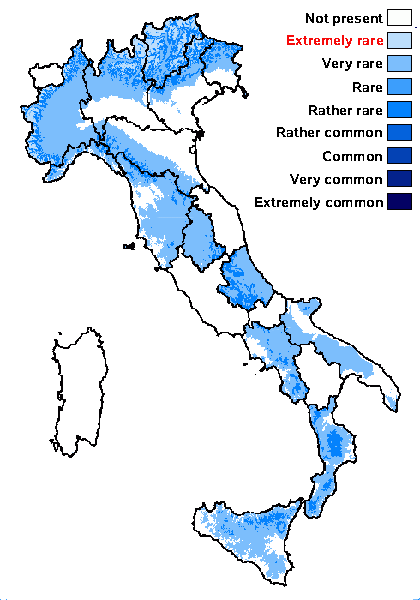
Predictive model
Herbarium samples
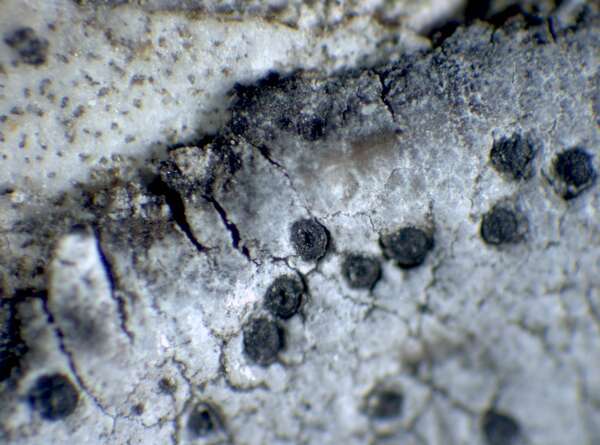

P.L. Nimis; Owner: Department of Life Sciences, University of Trieste
Herbarium: TSB (24510)
2001/12/03
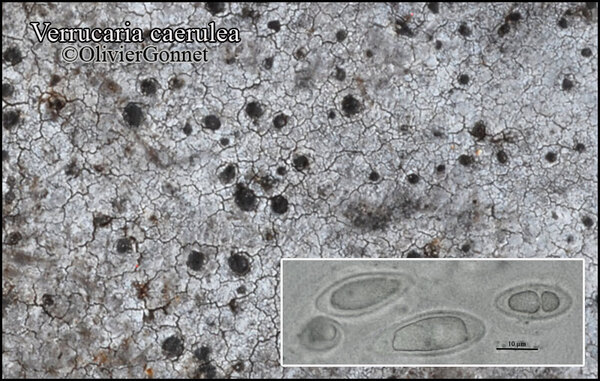
Courtesy Danièle et Olivier Gonnet - Source: https://www.afl-lichenologie.fr/Photos_AFL/Photos_AFL_V/Texte_V/Verrucaria_caerulea.htm
France, 19/9/2015 - Col vert - Vercors - Isère

Collezione lichenologica Abramo Massalongo del Museo di Storia Naturale G. Ligabue di Venezia - Autori: Seggi, Linda; Trabucco, Raffaella Proprietà: Fondazione Musei Civici di Venezia - CC BY-NC
Italy, Veneto, In opp. Campofontana M. Alba. 1855
as Verrucaria plumbea
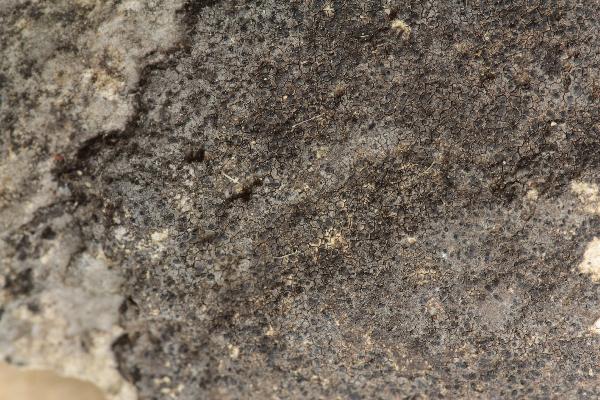
Collezione lichenologica Abramo Massalongo del Museo di Storia Naturale G. Ligabue di Venezia - Autori: Seggi, Linda; Trabucco, Raffaella Proprietà: Fondazione Musei Civici di Venezia - CC BY-NC
Italy, Veneto, in M. Rubbio
as Verrucaria plumbea
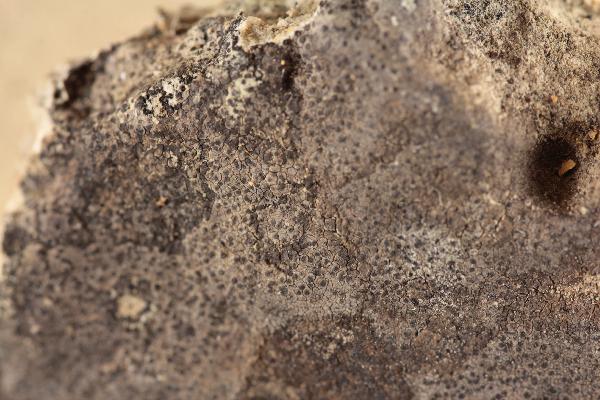
Collezione lichenologica Abramo Massalongo del Museo di Storia Naturale G. Ligabue di Venezia - Autori: Seggi, Linda; Trabucco, Raffaella Proprietà: Fondazione Musei Civici di Venezia - CC BY-NC
Italy, Veneto, in op. Tregnago 1855
as Verrucaria plumbea
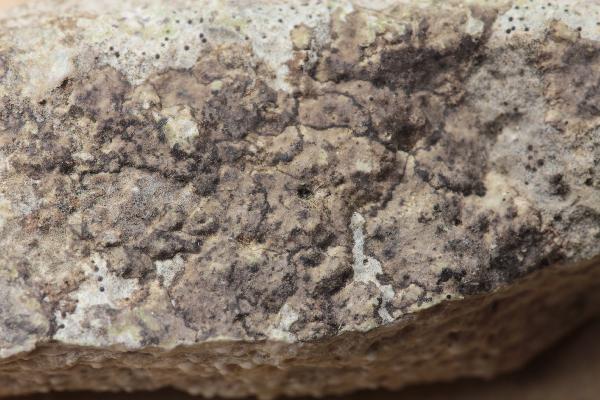
Collezione lichenologica Abramo Massalongo del Museo di Storia Naturale G. Ligabue di Venezia - Autori: Seggi, Linda; Trabucco, Raffaella Proprietà: Fondazione Musei Civici di Venezia - CC BY-NC
Italy, Veneto, in M. Rocca Garda
as Verrucaria plumbea var. fusca
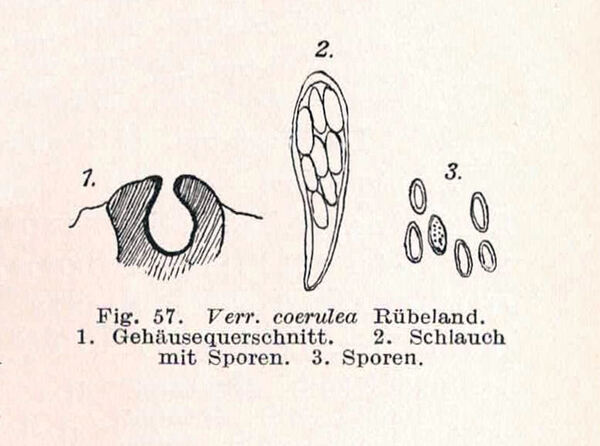
Zschacke, H. (1934) Epigloeaceae, Verrucariaceae und Dermatocarpaceae. In: Dr. L. Rabenhorst‘s Kryptogamen-Flora, Band 9, Abt. 1, Teil 1. Akademische Verlagsgesellschaft, Leipzig, 695 pp. - Public Domain
Growth form: Crustose
Substrata: rocks
Photobiont: green algae other than Trentepohlia
Reproductive strategy: mainly sexual
Commonnes-rarity: (info)
Alpine belt: extremely rare
Subalpine belt: very rare
Oromediterranean belt: very rare
Montane belt: rather rare
Submediterranean belt: very rare
Padanian area: absent
Humid submediterranean belt: very rare
Humid mediterranean belt: absent
Dry mediterranean belt: absent

Predictive model
| Herbarium samples |


P.L. Nimis; Owner: Department of Life Sciences, University of Trieste
Herbarium: TSB (24510)
2001/12/03

Courtesy Danièle et Olivier Gonnet - Source: https://www.afl-lichenologie.fr/Photos_AFL/Photos_AFL_V/Texte_V/Verrucaria_caerulea.htm
France, 19/9/2015 - Col vert - Vercors - Isère

Collezione lichenologica Abramo Massalongo del Museo di Storia Naturale G. Ligabue di Venezia - Autori: Seggi, Linda; Trabucco, Raffaella Proprietà: Fondazione Musei Civici di Venezia - CC BY-NC
Italy, Veneto, In opp. Campofontana M. Alba. 1855
as Verrucaria plumbea

Collezione lichenologica Abramo Massalongo del Museo di Storia Naturale G. Ligabue di Venezia - Autori: Seggi, Linda; Trabucco, Raffaella Proprietà: Fondazione Musei Civici di Venezia - CC BY-NC
Italy, Veneto, in M. Rubbio
as Verrucaria plumbea

Collezione lichenologica Abramo Massalongo del Museo di Storia Naturale G. Ligabue di Venezia - Autori: Seggi, Linda; Trabucco, Raffaella Proprietà: Fondazione Musei Civici di Venezia - CC BY-NC
Italy, Veneto, in op. Tregnago 1855
as Verrucaria plumbea

Collezione lichenologica Abramo Massalongo del Museo di Storia Naturale G. Ligabue di Venezia - Autori: Seggi, Linda; Trabucco, Raffaella Proprietà: Fondazione Musei Civici di Venezia - CC BY-NC
Italy, Veneto, in M. Rocca Garda
as Verrucaria plumbea var. fusca

 INDEX FUNGORUM
INDEX FUNGORUM
 GBIF
GBIF
 DOLICHENS
DOLICHENS
